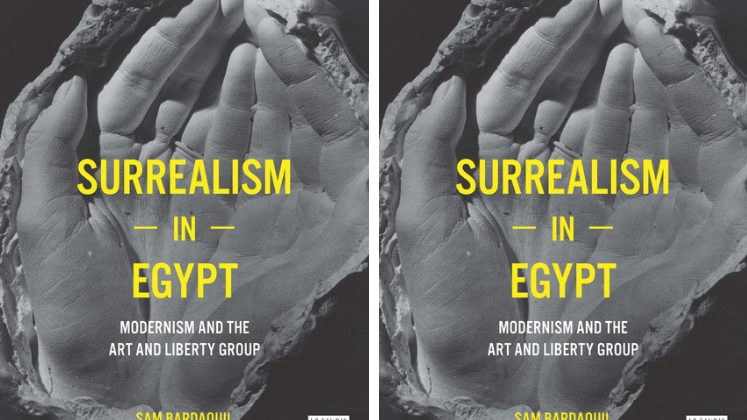 It is frequently commented that Heidegger writes impenetrable texts that are difficult to read and comprehend, but he also, as Barbara Bolt demonstrates in this guide to his work, provides an “artists’ guide to the world”. Heidegger Reframed grounds Heidegger’s writings in the critical questions confronting contemporary visual artists and students of art. Barbara Bolt takes the most relevant of his texts, including his most famous work, Being and Time, and sets out ways of thinking about art in a post-medium, digital, technocratic and post-human age. Reviewed by Jacob Phillips.
It is frequently commented that Heidegger writes impenetrable texts that are difficult to read and comprehend, but he also, as Barbara Bolt demonstrates in this guide to his work, provides an “artists’ guide to the world”. Heidegger Reframed grounds Heidegger’s writings in the critical questions confronting contemporary visual artists and students of art. Barbara Bolt takes the most relevant of his texts, including his most famous work, Being and Time, and sets out ways of thinking about art in a post-medium, digital, technocratic and post-human age. Reviewed by Jacob Phillips.
 Heidegger Reframed. Barbara Bolt. I. B. Tauris.
Heidegger Reframed. Barbara Bolt. I. B. Tauris.
Something distinctive about Martin Heidegger’s legacy, is a peculiar blend of scholarly complexity, with elements having a marked potential to resonate in people’s lives beyond the domain of the philosophical specialist. The complexity is apparent to anyone who has read his magnum opus, Being and Time, which shows how Heidegger was deeply embedded in the trajectory of German philosophy in the centuries which preceded him, and also that he was orientated by a highly original re-reading of the earliest Ancient Greek philosophical sources, most notably the pre-Socratics. In his own lifetime Heidegger’s work made significant ripples outside purely philosophical parameters, influencing art theory, hermeneutics, theology, and literary criticism. But, this influence can be extended to the realm of more pedestrian human concern – with his questioning on the meaning of existence, identity, ‘inauthenticity’ and ‘authenticity’, and so on.
This distinctive blend of scholarly complexity, and potential for wider resonance, presents issues for the secondary literature. Someone seeking to write on Heidegger for a contemporary audience, is faced with something of a tightrope to walk. On the one hand, there is a need to do justice to the full wide-ranging potential of some of his thinking, but on the other, there is a need not to sacrifice the deep philosophical inheritance which undergirds his thinking, nor the level of highly accomplished sophistication therein. In short, some secondary literature can run the risk of dumbing-down the Heideggerian oeuvre, so that his questioning after the meaning of existence is stripped of its proper philosophical power, or setting-up such a complex and insular structure, that the genuine relevance of his questioning is lost in self-referential philosophical discourse.
In the area of art theory this dynamic is somewhat pronounced, for the simple fact that art is likely to have a wider reach than academic philosophy: more people have visited Tate Modern than have read Being and Time. Barbara Bolt’s contribution on Heidegger, for the Interpreting Key Thinkers for the Arts Series, offers something of a novel approach. Many secondary sources on Heideggerian art theory will be written from a primarily philosophical orientation, using specific examples of art to express ideas from the philosophy itself. But Bolt turns the tables on this approach, and works from a primarily art-orientated base, using ideas from Heidegger’s philosophy to express some key issues facing the contemporary art scene. In terms of the tightrope walk between dumbing-down and insularity, this means the weight is likely to move more toward the former – in that the deep philosophical inheritance is put to one side, because art is in the driving-seat, as it were. Nonetheless, this book certainly navigates this territory very well indeed – and on the whole, Heidegger’s thinking is presented fairly, and is not stripped of its power by being transported into an art-orientated register.
Most of the discussion in Heidegger Reframed is orientated around specific works, including pieces by Sophie Calle, Anish Kapoor, William Kentridge and Patricia Paccinini. High points of the book include the discussion of ‘praxical knowledge’, that is, the knowledge that comes by doing. This is the sensibility-orientated knowing of the potter or the carpenter, contrasted with the emphasis on abstracted theoretical knowing, which is exemplified by Kentridge, particularly. Bolt also offers an admirable discussion on technology; an area where some of the more pressingly urgent aspects of Heidegger’s thinking are most apparent. Part of Heidegger’s criticism of the technocratic, involves his alarm at the commodification of the natural world, and the controlling oversight this entails over distinctively human Being. At some points, Bolt actually uses Heidegger’s questioning to criticise the art world itself. This technocratic commodification, for example, presents a point of contact with celebrity-style culture, not least that surrounding the more vulgar instances of the art celebrity, like Damien Hirst.
There are a couple of points in this book where Heidegger’s ideas are presented in a way which threatens trivialisation. For example, a work of Sophie Calle is discussed in terms of showing the orientation to ‘possibilities for being’ in human existence, in a way which could make Heidegger’s ontological structuring sound like mere possibilities for self-fulfilment, which is not accurate. However, the general integrity of the discussion does offset this danger. It is inevitable, perhaps, that in bringing a highly specialised thinker into a wider remit that some degree of simplification will occur. In this book, the discussion of Heidegger’s critique of modern science is too black and white, and at times given to sweeping statements condemning the entire heritage of post-Enlightenment Western thought which does not do justice to the level of sophistication of the Heideggerian critique.
Apart from the difficult tightrope walk facing secondary sources on Heidegger, there is another major issue which cuts through almost any discussion of his work: his support for the Nazi regime. Bolt touches upon this very briefly, and sidesteps the real burdensomeness of the historical ambiguity surrounding Heidegger’s relationship to fascism. That this area is deeply contentious I do not doubt, and, as ever, the jury is of course still out on the degree to which we should let Heidegger off the hook for certain judgements made in the 1930s. Nonetheless, there is discussion to be had surrounding the degree to which Heidegger’s thinking might combine a modernist contemporaneity, with a deeply reactionary disposition. This is something this book would have benefited from looking at. Where Bolt discusses the clear amenability between some of Heidegger’s ideas, and the ‘post-human’ tenor of much contemporary art, for example, this could provide a fascinating way to discuss some of the more veiled reactionary elements underneath the ‘post-modern’ character of much contemporary art – and offer an interesting line of questioning for what both the negative and the positive in Heidegger can offer to reflection on art for today.
Read more from the IB Tauris Reframed Series.
——————————————————————————————-
Jacob Phillips is doing a PhD at King’s College London. His research interests include human subjectivity in continental philosophy and systematic theology, German philosophy, the role of the humanities in contemporary society and the academy in public life. He enjoys reading and writing more broadly on various aspects of art, literature, philosophy and religion. Read more reviews by Jacob.







